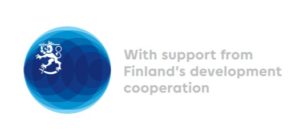National guidelines and standards for health facilities
The Integrated Health Facility Electronic Management System (iHFeMS) document describes minimum requirements, standards and guidelines for successful implementation and use of the iHFeMS in Tanzania private and public Health facilities. This guideline will address some of the key challenges experienced by health facilities implementing Health facility management systems and other related electronic systems that include a lack of proper governance, diverse scope of functionalities, and lack of standards hampering data exchange and information sharing.
The iHFeMS implementation guideline is applauded as a useful guide to the next steps for Tanzania in its eHealth journey. The document is easy to understand and therefore will help to lead Tanzania towards providing quality healthcare by making management of Health facility more efficient and more effective.
The next figure illustrates the element of the guideline.

According to the guidelines the first step is to analyse health facility business processes, reengineering the processes.
Health facility business process reengineering involves critical analysis and redesign of workflows and work practices of existing business processes within the Health facility setting in order to maximize the value of the computerization process.
The following tasks are:
· The guidelines and standards are available on the
website of the Ministry of Health, Community development, Gender, Elderly and
Children:
· The ministry Guidelines website: Guidelines (moh.go.tz)
National guidelines and standards for health facilities (2016): Guidelines_and_Standards_for_Integrated_Health_Facility_MoH
· The ministry Strategic plans: Strategic Plans (moh.go.tz)


| Cookie | Duration | Description |
|---|---|---|
| cookielawinfo-checkbox-analytics | 11 months | This cookie is set by GDPR Cookie Consent plugin. The cookie is used to store the user consent for the cookies in the category "Analytics". |
| cookielawinfo-checkbox-functional | 11 months | The cookie is set by GDPR cookie consent to record the user consent for the cookies in the category "Functional". |
| cookielawinfo-checkbox-necessary | 11 months | This cookie is set by GDPR Cookie Consent plugin. The cookies is used to store the user consent for the cookies in the category "Necessary". |
| cookielawinfo-checkbox-others | 11 months | This cookie is set by GDPR Cookie Consent plugin. The cookie is used to store the user consent for the cookies in the category "Other. |
| cookielawinfo-checkbox-performance | 11 months | This cookie is set by GDPR Cookie Consent plugin. The cookie is used to store the user consent for the cookies in the category "Performance". |
| viewed_cookie_policy | 11 months | The cookie is set by the GDPR Cookie Consent plugin and is used to store whether or not user has consented to the use of cookies. It does not store any personal data. |